Blogging Live from the Larry Ellison Oracle DW Appliance Keynote, San Francisco
15.54
Right, that's it. Everyone's going to the demogrounds now, there's a couple of machines on show. Now, where's Kevin Closson so I can ask him how it all works, and Curt Monash to see how he thinks this'll play in the market?
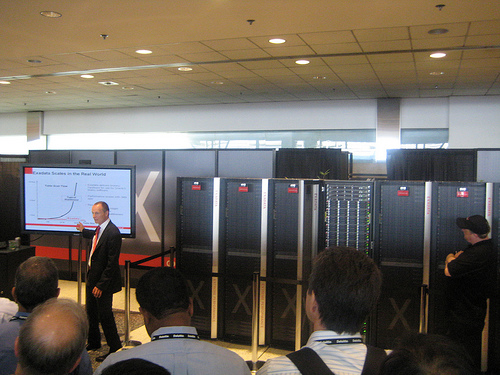
15.34
Idea is that hardware is open, as CPUs with more cores become available these will be used. Example given was going from a four core CPU to a six core CPU.
15.33
The server technology behind the product is HP's Proliant technology. So Oracle and HP are now in the data warehouse appliance market. Mark Hurd on video link now.
15.31
Jointly sold by Oracle and HP. Oracle sell it, HP build and service it.
15.30
HP Oracle Database Machine priced at $4000 per TB, software license $1.8M. Cost of two together plus hardware is <$14000/TB. Designed to run OTLP loads as well as DW loads.
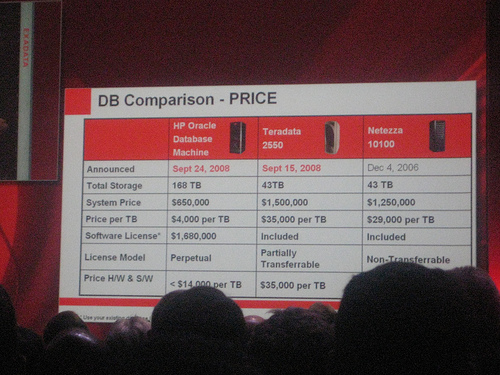
15.26
Teradata uses conventional disk arrays. No intelligence in the disk controller. Suffers from the problem that the disk controller moves disk blocks to the database server, the interconnect is slow and is the bottleneck. Architecturally it can't compete, because of this inadequate data bandwidth.
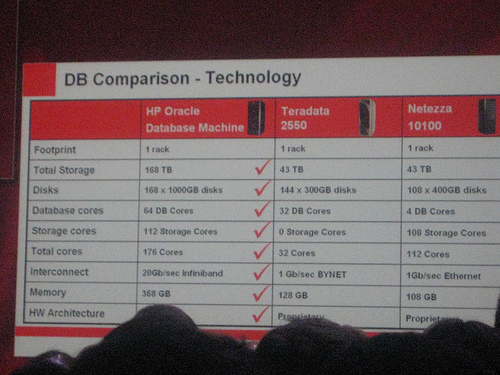
Netezza does a lot better, it's basically a storage server, with one processor per disk server. Oracle's advantage is that its machine runs Oracle, Netezza does not. Netezza box is not fault tolerant, Oracle's is. Netezza misses basic DW functionality (bitmap indexes etc). Obviously Netezza and and Teradata are the vendors this is aimed at.
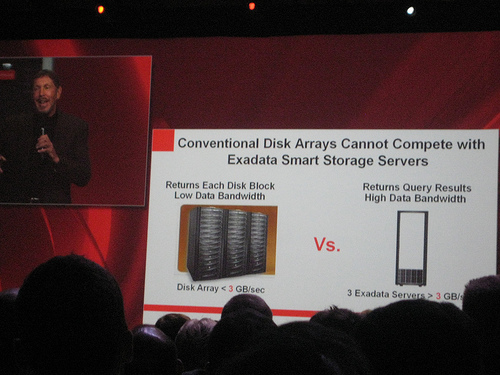
15.25
The problem with current storage arrays and servers is that there is too much data movement between the two components. Because the Exadata server has more bandwidth and only sends back results, processing the query predicates locally, the amount of bandwidth it requires is reduced, with lack of this bandwith being the main limiting factor for data warehouses. Every time you add an Oracle storage server you add two more infiniband connectors, keeping the hardware in balance.
15.20
So the "X" is actually a database / data warehouse appliance, in the same space as Netezza, DatAllegro etc. It's also being positioned as a general "large database" appliance.
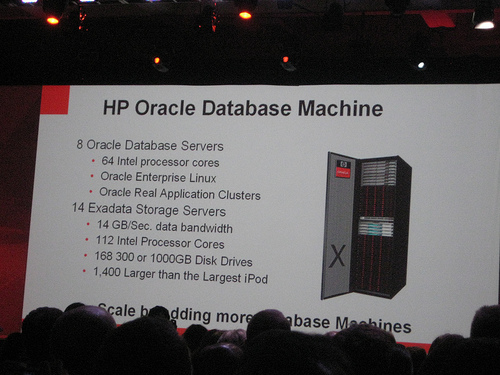
15.18
Started providing early versions of the system to customers for the past year. Amazon mentioned as a customer.
15.15
Larry's now announced a database appliance - the HP Oracle Database Machine. A database (data warehouse) appliance. 8 Oracle database servers. 64 intel processor cores. Oracle Enterprise Linux. Oracle RAC. 14Gb/sec data bandwidth. 112 Intel Processor Cores. 168, 300 or 1000GB DIsk Drives. 14000 Larger than the largest ipod.
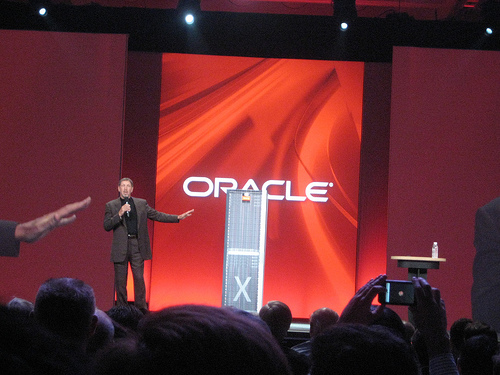
15.12
The database server pushes the query, the predicates to the Oracle storage server. The storage server (or servers, in a grid) then query the data, then return just the results, the required columns, to the database server.
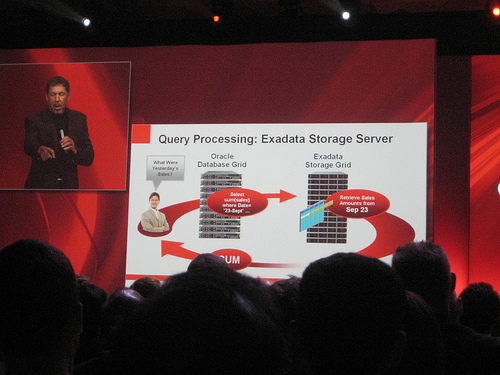
Uses 2 infiniband pipes, 1GB/sec (bandwidth limited by speed of the 12 disk drives in each server) per storage server. Dozens of servers can run in parallel.
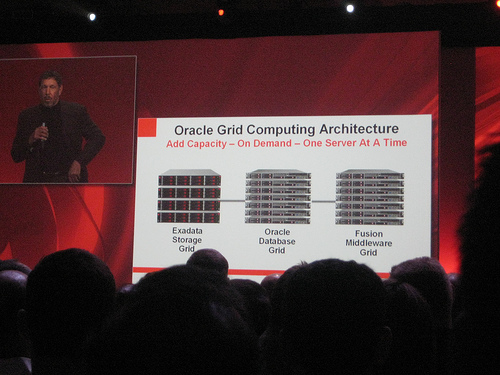
Built by HP.
15.04
It's Oracle's first hardware product - the "Exadata Programmable Storage Server"
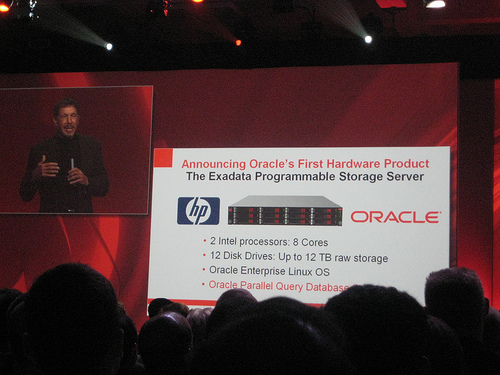
2 Intel processors, 8 cores 12 disk drives, up to 12TB raw storage. Runs Oracle's parallel query software, moved into the storage server. Returns query results, not disk blocks.
2.00pm
I'm currently sitting in the audience waiting for the Larry Ellison keynote at Oracle Open World 2008. It's just past 2pm and the crowds are coming in now. I'm not sure whether we'll have to sit through the vendor keynotes first, if so it'll be about an hour or so before Larry comes on, and we get to hear what this mysterious "Project X" is all about. Keep this page bookmarked and check back over the next couple of hours, I'll update the posting as things are announced.